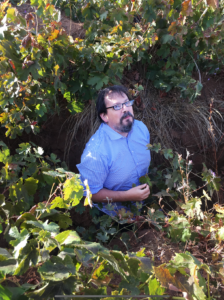Itata
THE OLDEST VINEYARDS IN CHILE

Until recently few wine lovers had ever heard of Itata. It can be found at the southern end of Chile’s long narrow growing wine region, some five hundred kilometres south of the capital Santiago. We are familiar with the neatly manicured rows of the international varieties such as Cabernet, Merlot, Sauvignon and Chardonnay found further north, but Itata is a world away from this.
A cool climate area open to the sea, the wine growing part lies twenty kilometres or more inland from the port of Concepción, also the regional capital. Itata may not be familiar to wine lovers, but this is an historic region, the first place the Spanish colonized and planted grapes in the mid fifteenth century. At one stage it supplied inexpensive wine to the cities further north, but it was gradually overtaken by the more northerly vineyards and fell into disuse. It is only over the last decade that producers have rediscovered Itata and its wealth of old vines, many a century or more old. The vines, typically head-trained, are dry-farmed and often worked by horse and plough. The soils vary but are primarily granite, giving the wine an enticing freshness and a mineral edge.
The most popular grapes are País, Moscato and Cinsault. País is one of the great historic  grapes of South America. Originally from Spain, it made its way over to Chile and Argentina via the Canaries, where it is known as Listán Prieto. In Argentina it is known as Criolla Chica. Missionaries brought it up the west coast of America to California where, appropriately, it is called Mission. For many years it was dismissed by most as being only useful for low quality wine. However, in recent years there has been renewed interest (as there has been for Cinsault) in Chile and elsewhere and some excellent wines produced.
grapes of South America. Originally from Spain, it made its way over to Chile and Argentina via the Canaries, where it is known as Listán Prieto. In Argentina it is known as Criolla Chica. Missionaries brought it up the west coast of America to California where, appropriately, it is called Mission. For many years it was dismissed by most as being only useful for low quality wine. However, in recent years there has been renewed interest (as there has been for Cinsault) in Chile and elsewhere and some excellent wines produced.
The climate in Itata is cool, moderated by the Pacific Ocean, and rainfall relatively high but mainly occurring in the winter. Summers tend to be dry and moderately sunny.
